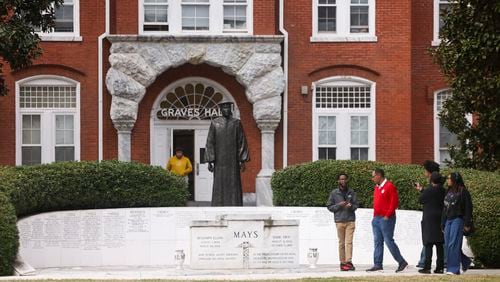Five million dollars. That’s how much teachers unions have spent to defeat Amendment 1. It’s enough to make you ask: Why?
It isn’t to protect “local control,” and not only because nearly all the dough for opposing the state intervention in chronically failing schools has come from outside Georgia. Even under the Opportunity School District, at least 96 percent of public schools would still be run by their local school boards. And any schools converted to charter schools, as we can expect in most cases, would be run by local community members — making control more local, not less.
It isn’t to protect local voices. The OSD legislation includes a dozen requirements for the proposed district to involve parents and community members when making decisions. That gives them more of a say than state law affords today.
It isn’t to protect academics. The schools on the OSD list aren’t just failing their students now. They’ve been doing so for at least three years, and in many cases for much longer than that. They are unquestionably unsuccessful, and their track record demonstrates they don’t have the answers.
It isn’t to prompt an end to state “budget cuts.” I used quote marks there because, as often as money is invoked to explain these schools’ failure, state funding for public schools has increased five years running. On the contrary, while state spending per pupil has gone up by hundreds of dollars a year, local spending has gone down on average.
It isn't even to protect teachers' jobs. The students who attend failing schools — there were almost 68,000 at the last count — aren't going away. While some ineffective teachers may well lose their jobs, their posts won't go unfilled. They'll be replaced by other teachers.
So what is it about? Beats me. There’s no explaining the existential fight we’ve seen from the educrats and unions.
(And by the way, spare me the technical talk about how we have “teachers associations” in Georgia, not unions. Those millions have come from national teachers unions, with representatives arguing it’s OK because local teachers paid dues to those groups. That means those teachers are union members, no? You can’t have it both ways.)
It makes no sense that state intervention in 20 schools per year — out of more than 2,200 in the state — would be a hill to die on. Then again, neither does the fact the same teachers unions have spent even more money in Massachusetts to defeat a measure there to allow the creation of just 12 new charter schools per year.
Maybe they just want things to stay the way they are now. Whereas labor unions once existed to effect change in workplaces, in the 21st century they mostly exist to keep things the way they are — in the face of evidence they’re broken.
If the OSD is defeated next week, they may get their wish. This proposal is an ambitious attempt to begin reversing one of the main factors underlying the generational poverty that afflicts so many communities with failing schools. But it can only be a start.
And if that first step is halted before it’s even taken, for the groundless reasons described above, it is hard to imagine what other ambitious plans would be tried anytime soon.
About the Author





